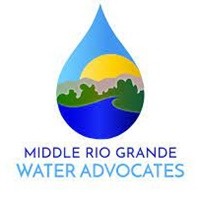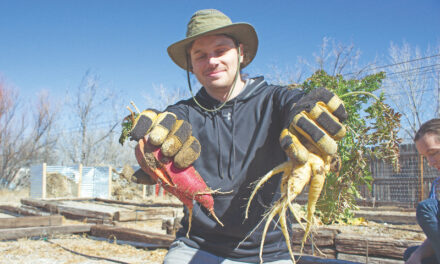
Magdalena’s Public Library offers free high-speed Wi-Fi to library patrons.
File photo
Socorro County is the second worst county for broadband access in the state of New Mexico, according to a broadband survey and strategic plan created for the county and the city of Socorro.
The price tag for bringing high-speed internet to the rural areas of Socorro County is estimated at $53 million. The county’s rural nature and large geographic area make bringing high speed internet to county residents a challenge.
The broadband survey and strategic plan were created by Finley Engineering and CCG Consulting.
“Our two firms have worked extensively with rural communities all over the country and we observed almost immediately that the county has some of the worst broadband conditions we’ve witnessed anywhere. Unlike many counties, even the county seat of Socorro has dreadful broadband options for most customers, with DSL from CenturyLink as the primary broadband product available to customers in the city,” the survey states.
Since the report’s release in April, the city of Socorro announced in July that it plans to enter a franchise agreement to bring high-speed internet into the city with internet service provider TDS, which currently provides cable service in the city. Construction of that fiber network is expected to begin in 2022, according to a TDS press release.
The broadband report found that no more than one percent of homes and businesses in the county meet the FCC definition of broadband: a customer connection with speeds of 25 Mbps download and 3 Mbps upload. The report also argues that the definition is out of touch with what households actually need for a good broadband connection.
One of the biggest issues with improving broadband in the county is the cost of getting better poles, which in most places would be inadequate for fiber. The survey recommends burying a fiber network because the estimated cost for dealing with the poles would be similar and burying the fiber would be a faster solution than fixing the poles.
“We must note that the poles in the county are collectively the worst poles we’ve seen anywhere, although other communities also wrestle with this same problem,” states the survey.
Socorro County is applying for federal and state grants, trying to find the money for building internet infrastructure in the county, said County Manager Michael Hawkes.
To help secure grant funding, the county needs to find an internet service provider willing to take over the infrastructure and provide the actual high-speed internet service.
“They’re going to look at penetration. What penetration means is how many people will actually want the service,” said Hawkes.
At 6,647 square miles, Socorro County is the second-largest county in the state geographically but is not densely populated.
“If we stand it up, they’ll take it over, but what are the sustainability possibilities? If we stand it up and they don’t have enough customers, then their footprint starts to shrink as they abandon people who don’t want to pay for it,” said Hawkes.
The topography of the county, with many mountains and valleys, also makes building that infrastructure more challenging, Hawkes said.
Representatives from the county are on a committee with representatives from the city of Socorro, New Mexico Tech and the school system searching for funding and talking to internet service providers.
Having high-speed internet access throughout the county could help attract businesses, more easily allow telecommuting, and improve education access, said Hawkes. The county could also potentially benefit from higher-speed internet because it is able to tax online purchases.
Hawkes saw the negative impact poor internet access had on education first hand.
“I had grandkids that couldn’t get on, or could only get on one at a time or log in later because they just didn’t have the bandwidth or the speed or they didn’t have hotspots. Each of those hotspots is about $250 and then there’s a monthly charge,” said Hawkes.
The county provided hotspots for families with kids who needed lacked the internet access needed to do their schoolwork. Some of the Alamo students who were given hotspots weren’t actually able to use them from their homes because of the terrain, so still had to do their school work from a parking lot, said Hawkes.
In Alamo, there are many dead spots and canyons that make adding internet infrastructure difficult, said Chapter President Virgil Sandoval.
“We don’t have any range of broadband,” said Sandoval. “We just have the tower that Western Telephone Communication provides. It just goes three miles and even three miles is really weak.”
The lack of internet access had a heavy impact on the community, said Sandoval, especially when students were doing school from home. Many students would complete schoolwork from inside their parents’ parked car in a lot near Walters Park, where they could access wifi.
The chapter is actively looking for federal grant funding to improve internet access and grant applications are in progress, said Sandoval.
In the village of Magdalena, the public library is a hub for internet access. The library is one of the few village buildings with fiber optic, and patrons can access the high-speed internet for free from inside the library, the library’s outdoor deck or the library parking lot.
From July 2020 to June 2021, 255 people have come inside to use the library computers and there have been 9,329 wifi sessions using the library’s wifi, said Library Director Ivy Stover. Five to 10 people come to the library daily to use the wifi.
Prior to the pandemic, even more cars were pulled up in the library parking lot for internet access, but the schools and the county gave out hotspots to help families access online education and that has reduced the number of people coming to the library for internet access, said Stover.
After the wifi access point was established in Alamo, fewer people came to the library from Alamo to access the internet, she said.
From August to October 2020, three to four students came to the library daily to use the wifi for schoolwork. The library building was still closed at that time, and Stover said she’s not sure what the students began doing once it got cold.
One sign to Stover that many Magdalena residents have slow internet access is that while other libraries are cutting down their DVD collections, Magdalena’s library still has 3,000 DVDs. To Stover, that’s a sign that many residents do not have fast enough internet to stream video. Slow internet can cause more serious problems than not being able to stream video. If the internet signal is too weak, it can be difficult to access online banking, said Stover.
A common complaint the broadband survey turned up was businesses with broadband that isn’t fast enough to process credit cards, a less demanding use of broadband.
“The connections at some businesses are so poor that business owners tackle the online functions in the evening from home rather than at the business. Employees told us that they often use personal cellphone broadband to complete business tasks, at a personal cost,” reads the broadband survey.
The poor internet connection also has an impact on healthcare access.
“The medical community told us that 50% of all attempts at telemedicine failed during the pandemic, leaving citizens often with no health care option,” the report states.
The strategic plan recommends the county try to attract internet service providers, review any county policies that might add to the cost of building broadband in the county, and consider a statistically valid survey to quantify how many residents would actually pay for high-speed internet. The report also encourages persistence, noting that it is rare for a single internet service provider to provide broadband for an entire county.






















